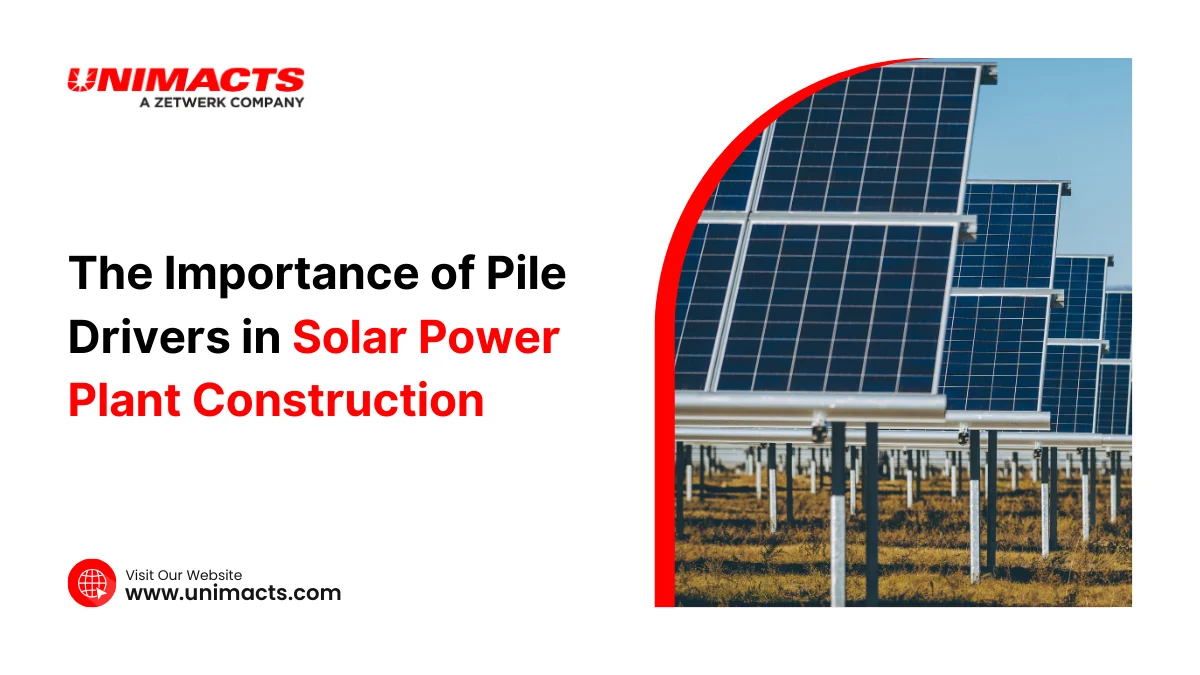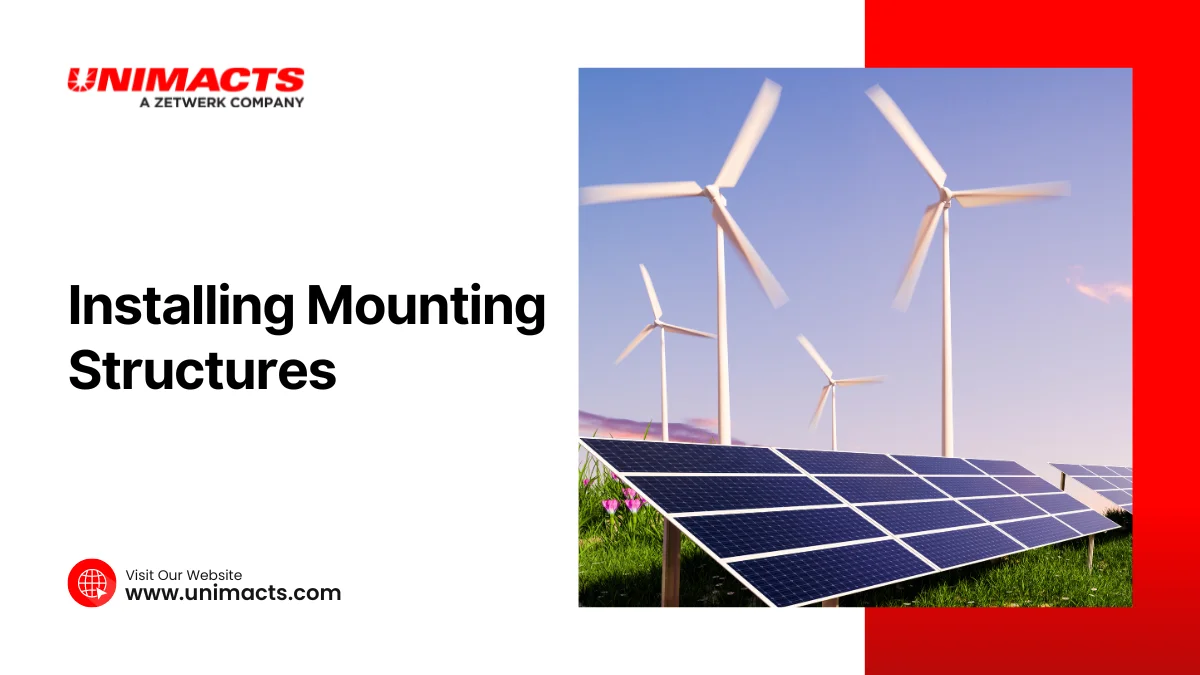In the rapidly expanding solar energy sector, providing the structural integrity of solar installations is critical. One critical component in achieving this stability is using power piles, also known as solar piles. These foundational components are indispensable for supporting the weight of solar panels and maintaining their alignment over time despite varying environmental conditions. With adequately installed power piles, the efficiency and longevity of solar power systems could be protected.
Solar piles are essential for the success and sustainability of solar energy projects. They are crucial in every step, from foundation preparation to panel installation. This blog will discuss their importance, installation process, and benefits for solar projects.
The Importance of Pile Drivers in Solar Power Plant Construction
Solar and battery storage are estimated to account for 81% of new U.S. electric-generating capacity in 2024. Solar is projected to account for 58% of this new capacity, highlighting the growing importance of foundational elements like power piles in supporting these installations.

Pile drivers are essential machines in the construction of solar power plants. They play to establish a stable and reliable foundation for solar installations. These specialized machines are designed to drive power piles into the ground and ensure they reach the necessary depth and alignment to support the weight and structure of solar panels.
- 1. Structural Stability
Pile drivers create a solid foundation for solar installations by driving solar piles deep into the ground. This guarantees that the solar panels remain securely anchored, even in challenging soil conditions or adverse weather.
- 2. Efficiency and Precision
These machines are packed with advanced technology that allows for accurate pile placement, minimizes errors, and reduces the time required for installation.
- 3. Versatility in Different Soil Conditions
Whether the construction site has soft, sandy soil or challenging, rocky terrain, pile drivers can be adjusted to ensure that the piles are driven to the appropriate depth and stability. This adaptability is essential for the widespread deployment of solar power plants in diverse geographical locations.
- 4. Compliance with Standards
Standards like ASTM D3966 guide pile performance and testing under lateral load, ensuring foundation resilience. Pile drivers drive piles precisely to meet requirements, ensuring solar installation safety and reliability.
- 5. Role in Solar EPC Projects
Pile drivers are essential in solar EPC projects. These solar projects involve a comprehensive approach to constructing solar power plants, from design and procurement to installation and commissioning. Pile drives play a crucial role in ensuring a solid base for subsequent phases of the project.
- 6. Cost-Effectiveness
Investing in pile drivers can also be cost-effective in the long run. Pile drivers help reduce the need for future repairs and maintenance by ensuring a stable and durable foundation. This durability leads to lower operational costs and a more reliable solar power system, providing long-term benefits for solar energy projects.
Preparing the Foundation
Before installing solar panels, the foundation must be prepared appropriately. This involves thoroughly assessing the soil conditions and site-specific factors affecting the installation's stability. Standards such as ASTM D3966 provide guidelines for testing and evaluating the performance of piles under lateral load.
Proper foundation preparation is crucial in preventing issues such as soil erosion and ground shifting, which can compromise the integrity of the solar installation.
- 1. Installing Mounting Structures

Once the foundation is prepared, the next step is to install mounting structures. These structures are typically steel or aluminum and are designed to support the solar panels. The piles act as anchors, securing the mounting structures to the ground.
This step is critical in maintaining the alignment and positioning of the solar panels, which is essential for optimal energy production. The accuracy of pile installation directly impacts the efficiency and performance of the solar power system.
- 2. Mounting Solar Panels
Once the mounting structures are in position, the solar panels are installed. This step involves securing the panels to the mounting structures and ensuring that they are correctly oriented to maximize sunlight exposure.
The stability provided by the power piles ensures that the panels remain in place, even under adverse weather conditions. Proper panel installation is crucial in achieving the solar power plant's desired energy output and overall performance.
- 3. Ongoing Maintenance and Upgrades
Regular maintenance and periodic upgrades are essential for the longevity of solar power installations. The stability provided by the power piles makes it easier to conduct maintenance tasks such as cleaning the panels and checking for structural issues. Additionally, upgrades such as installing newer, more efficient panels can be done without the need for extensive foundation work, thanks to the robust support provided by the piles.
- 4. Considering Environmental Impacts
The environmental impact of solar power installations is a critical factor to consider. Adequately installed solar piles can help mitigate some of the adverse effects on the environment.
For example, the piles help prevent soil erosion and habitat disruption by securely anchoring the solar panels. Using sustainable materials and environmentally friendly installation practices can reduce the solar power plant's ecological footprint.
- 5. Managing Subsurface Risks
One of the challenges in solar pile installation is managing subsurface risks. These risks can include variations in soil composition, underground water levels, and the presence of rocks or other obstructions. Proper site assessment and advanced pile-driving techniques are essential in mitigating these risks.
Solar EPC (Engineering, Procurement, and Construction) organizations can ensure a more stable and reliable foundation for the solar power plant by addressing subsurface challenges early in the installation process.
Final Words
From preparing the foundation to installing mounting structures and solar panels, power piles are essential for ensuring solar power systems' stability, efficiency, and longevity. Adequately installed solar piles not only support the structural integrity of the installation but also facilitate maintenance, upgrades, and environmental sustainability.
By understanding the critical role of solar piles and incorporating best practices in their installation, you can develop more reliable and sustainable solar energy projects. Investing in high-quality solar pile drivers and adhering to industry standards, such as ASTM D3966, ensures solar installations are built to last and perform optimally under various conditions.
Suppose you want to enhance your solar energy projects with solid and dependable foundations. In that case, Unimacts offers a wide range of solar piles and installation solutions with extensive expertise and commitment to quality.
Discover how Unimacts can be your trusted partner in supporting your solar energy projects with cutting-edge technology and superior service. With your expertise and our products, you can harness the sun's power and create a brighter, greener future, feeling empowered in your contribution to sustainability.


